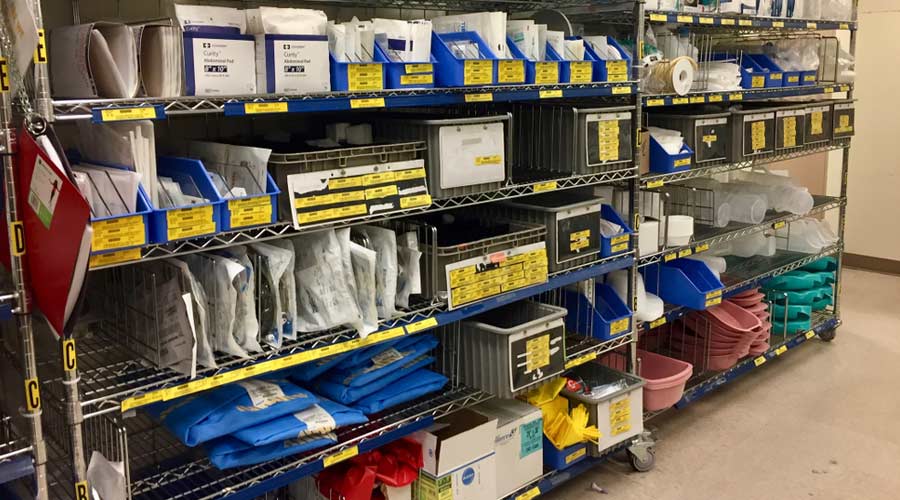Supply chains have been in the news far more often in the past two years than they ever have been. In healthcare, the headlines are often alarming. From the shortage of personal protective equipment (PPE) early in the pandemic in 2020 to the current nationwide shortage of baby formula, when healthcare supply chains are disrupted, obtaining products in a timely manner can be the difference between life and death.
Supply chain hiccups have always caused disruptions, but until recently, those disruptions had been limited to small geographic or demographic spaces. Now, a kink in the supply chain can disrupt an entire industry around the globe for weeks.
The old ways of running supply chains are falling away. The process has been the same for decades, and those practices just do not work anymore. COVID-19 still looms large, and other supply chain challenges are almost certain to arise. But now is the time for healthcare facilities managers to take a step back, examine what is and is not working in their supply chains and decide what to do about it. What can they do?
Diversify
When companies plot their supply chain strategy, they aim to fulfill four primary purposes:
- Fulfill products and services efficiently.
- Enhance a company’s ability to react to change.
- Reduce network risk, and make sure a company is safe.
- Facilitate financial success.
Too many managers fixate on the first point, efficiency. This fixation can lead to advocating for the sole source approach — buying everything needed from one place. The strategy sounds efficient and cost effective, and when supply chains are flowing as expected, it often is.
But putting all of an organization’s eggs in one basket, especially during a crisis, limits options for available products or services. When a vendor’s supply chain is disrupted, the whole operation can follow suit.
When healthcare systems across the country were slammed with COVID-19 cases, PPE stock ran out quickly, and systems that did not have another source of PPE were in dire straits. But facilities and systems with a wider network of PPE vendors could be flexible and source the products they needed from other suppliers.
This strategy was efficient, and it was vital for the facilities to react to major changes. While it cannot always solve disruptions, it does not tie an organization’s hands behind its back because it does not have other options.
Question
Think back to a time when a business partnership was not working out well. Perhaps there had been miscommunications or a missed deadline. One side was unhappy, and likely, so was the other. Too often, the response from companies and organizations in such situations is to carry on as usual or simply terminate the contract and go a different route.
Managers have another option: Ask probing questions to find the reason the relationship is not working. Take the traditional vendor-customer relationship, and examine it from a different angle with a new perspective.
These relationships should be mutually beneficial, so when they are not, ask why. When approaching a frank discussion with a partner, it is not an us-vs.-them position. Both sides need one another, so it is in both parties' best interests to work together to find the problem and solve it.
Disrupt
The old ways of running supply chains are changing. Is the current process still efficient, nimble and cost-effective? How can an organization use disruptive supplier innovation to change relationships, drive efficiencies and reduce cost and waste in the supply chain?
Innovation is key. Even if a manager's vendor-supplier partnership is strong, there are opportunities to question the status quo. Why is this process done this way? Is this the best approach? How can we do it differently?
Transitioning to an enterprise relationship management approach that focuses on identifying the root cause of challenges and driving systemic solutions will push a supply chain past the traditional order-and-fill mentality into a strategic asset for the organization.
If all a manager's vendor relationships are stellar and the supply chain is running smoothly, that is great news. But managers probably would not have read this whole article if they did not think there was something they could do to improve things.
Managers cannot be afraid to ask hard or uncomfortable questions. Partners might be more aligned than expected and might bring new ideas and innovations to the table.
Sara Barker is vice president of corporate support services with Medxcel. Barker is responsible for the oversight and operational performance of key corporate support divisions. She has 15 years of experience in the supply chain, sourcing and procurement industry.

 Contaminants Under Foot: A Closer Look at Patient Room Floors
Contaminants Under Foot: A Closer Look at Patient Room Floors Power Outages Largely Driven by Extreme Weather Events
Power Outages Largely Driven by Extreme Weather Events Nemours Children's Health Opens New Moseley Foundation Institute Hospital
Nemours Children's Health Opens New Moseley Foundation Institute Hospital Code Compliance Isn't Enough for Healthcare Resilience
Code Compliance Isn't Enough for Healthcare Resilience Ribbon Cutting Marks First Phase Completion for New Montefiore Einstein Facility
Ribbon Cutting Marks First Phase Completion for New Montefiore Einstein Facility